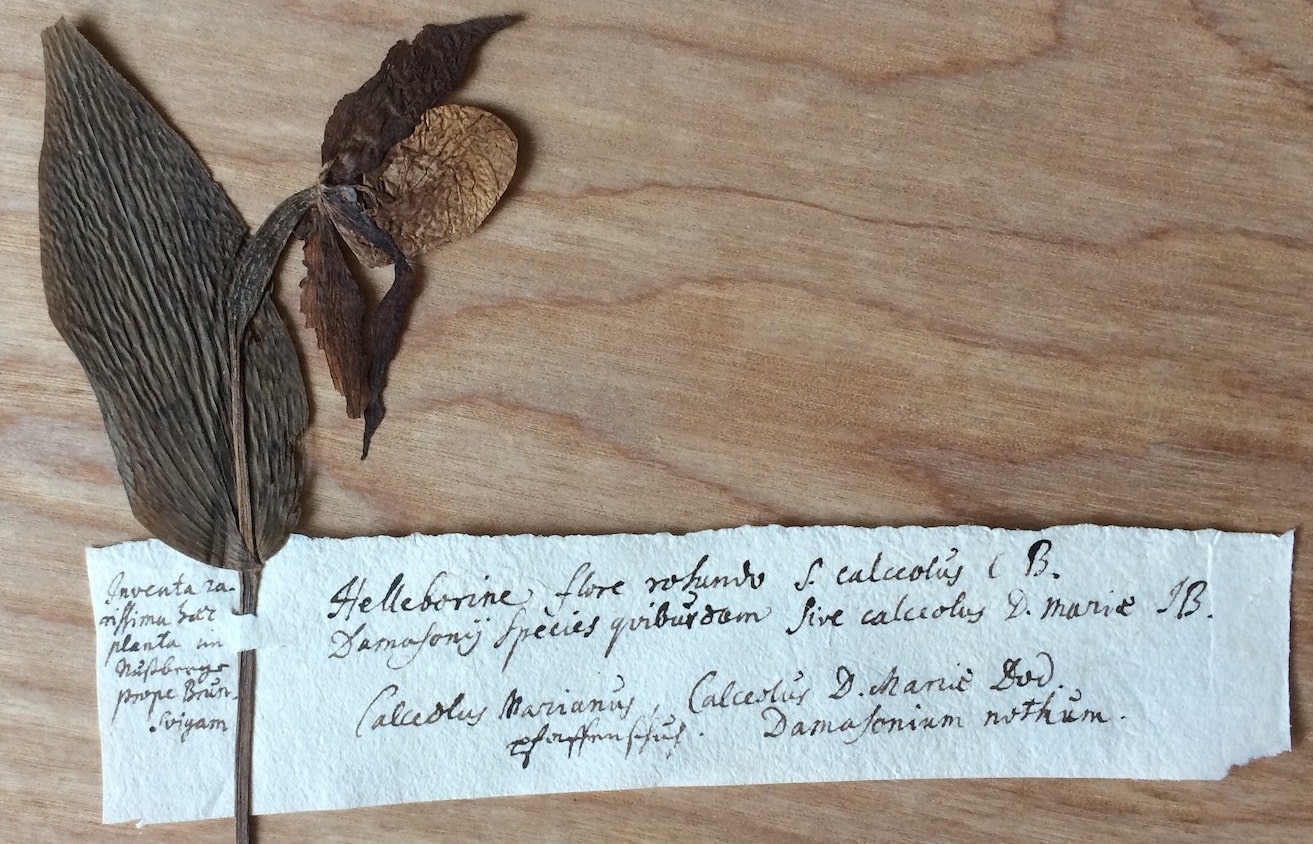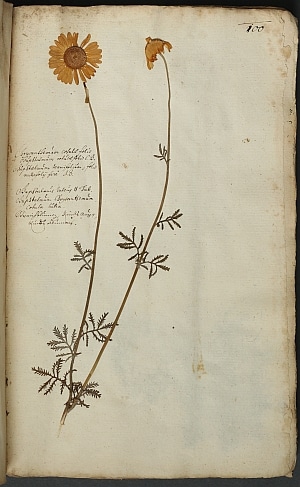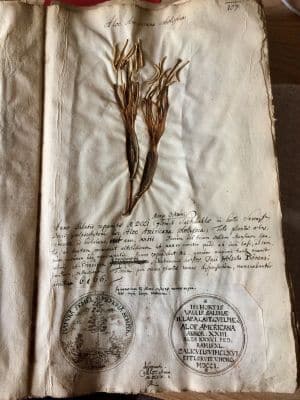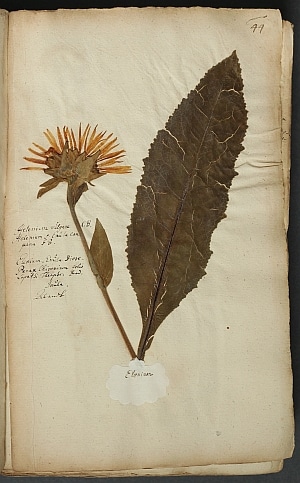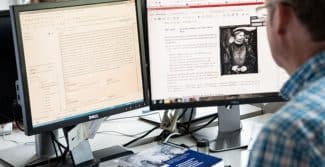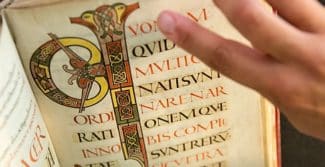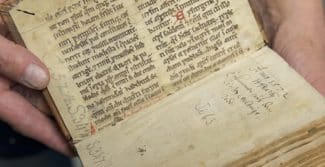29 July 2020
Today, these herbaria provide a vital record of the historical flora in particular geographic regions. A few months ago, using special funds provided by the state of Lower Saxony, the library was able to acquire a herbarium containing examples of around 1,300 plant specimens that documents the flora of the Weser Uplands and the area around Braunschweig and Celle in the early 18th century.
Why was a library with historical holdings so keen to acquire such a collection of dried plants? The library took notice of this antiquarian offering as the conserved plants were stored in book form. Whereas it has been common practice since the 19th century to archive such specimens separately, mounted on loose sheets of paper or put in envelopes, the collectors in earlier times affixed their specimens to the empty pages of bound books. This herbarium from northern Germany consists of more than 560 pages spread over three volumes.
The collection of dried plants in books has a long history with roots, as the oldest surviving examples have shown, in the Renaissance. Knowledge of plant species increased rapidly as Renaissance Humanists rediscovered and translated works of classical learning – supplying them with new commentaries – and research expeditions began to explore every corner of the world. This amalgamation of old and new knowledge reinforced people’s desire to examine specimens themselves based on their own viewpoints, and it was during this time that the autopsia became an important epistemic concept. During their forays through nature, plant collectors often collected individual specimens which they later made drawings of and attempted to preserve. This was mainly done so that they could share their findings with other herbalists. Their main interest was not in botany as a personal study but rather in the medicinal and curative properties of the plants they collected. During this time, the study of medicine was firmly based on herbal remedies, and the identification and recognition of certain species was of the utmost importance for the treatment of illnesses.
Books may have played an important role when it came to pressing plants – it is no longer possible to determine with any precision the details of how these plants found their way into the book. However, one can say that the material of which books were made did play an important role, for it was not until paper was manufactured in Europe, beginning in the 13th and 14th centuries, that their pages became suitable for pressing plants. Parchment, the predecessor of paper, is unable to absorb enough of the moisture that plants release when pressed, meaning that the books of previous eras were unsuitable for conserving specimens.
The oldest herbaria in book form surviving to this day date back to the 16th century. The Herzog August Bibliothek owns a herbarium from this period. Johann Gagelmann, who would go on to become court physician in Wolfenbüttel, compiled it in around 1570 during his medical studies at the University of Padua. The library also holds a 15-volume herbarium compiled by another local collector, who documented the Siberian flora of the 18th century. The volumes now purchased complement these herbaria of foreign flora with the historical flora of northern Germany.
The details of the work’s provenance have yet to be determined: to date we only known that a plant collector by the name of A. Rupert complied two of the three volumes beginning in 1699 at the locations he mentioned. A second unnamed botanist appears to have come into ownership of the volumes at some time during the 18th century and continued to add his own specimens to the herbarium in a third volume. In the early 19th century, the entire collection found its way to England and received even greater public attention at an exhibition hosted by the tradition-steeped Linnean Society in London in 1907. One of the last owners of the herbarium was Stephan Keynes, a great-grandson of Charles Darwin. The volumes made their way back to Lower Saxony when an English antiquarian dealer offered them directly to the library.
These historical plant collections are of great importance to researchers of modern biodiversity, for by determining the species inventory, they are able to track changes in the occurrence of species and shifts in the ranges of individual species going back to the early 18th century. In their work, researchers now apply methods drawn from microbiology in an attempt to unravel the genetic code of the conserved specimens and find out more about the characteristics and features of the different species and varieties. In a sense, one could even say that they are bringing these centuries-old plants back to life.
But herbarium books also offer a highly interesting display item elucidating historical collecting and in-depth cataloguing practices in the natural sciences. And they also reveal what motivated the scientists of the past – the awe they felt for the living world in all its forms from the spectacular to the unremarkable.
